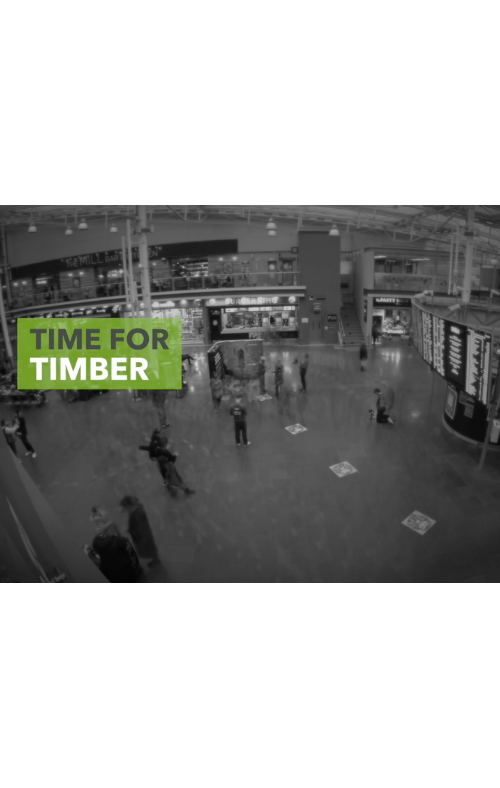Interview with: Charlie Green, co-founder and co-CEO of TOG
The Black and White Building is open. Here’s why this design-led workspace specialist is committing to building in timber.
 Home PageNet Zero HeroTimber in constructionTowards 2050Why invest in timber?
Home PageNet Zero HeroTimber in constructionTowards 2050Why invest in timber?
 Home PageNet Zero HeroTimber in constructionTowards 2050Why invest in timber?
Home PageNet Zero HeroTimber in constructionTowards 2050Why invest in timber?
 Home PageNet Zero HeroTimber in constructionTowards 2050Why invest in timber?
Home PageNet Zero HeroTimber in constructionTowards 2050Why invest in timber?
 Home PageNet Zero HeroTimber in constructionTowards 2050UncategorisedWhy invest in timber?
Home PageNet Zero HeroTimber in constructionTowards 2050UncategorisedWhy invest in timber?
 Home PageNet Zero HeroTimber in constructionTowards 2050Why invest in timber?
Home PageNet Zero HeroTimber in constructionTowards 2050Why invest in timber?
 Home PageNet Zero HeroTimber in constructionTowards 2050Why invest in timber?
Home PageNet Zero HeroTimber in constructionTowards 2050Why invest in timber?
 Home PageNet Zero HeroTimber in constructionTowards 2050
Home PageNet Zero HeroTimber in constructionTowards 2050
 Home PageNet Zero HeroTimber in constructionTowards 2050Why invest in timber?
Home PageNet Zero HeroTimber in constructionTowards 2050Why invest in timber?
 Home PageNet Zero HeroTimber in constructionTowards 2050
Home PageNet Zero HeroTimber in constructionTowards 2050
 Home PageNet Zero HeroTimber in constructionTowards 2050Why invest in timber?
Home PageNet Zero HeroTimber in constructionTowards 2050Why invest in timber?
 Home PageNet Zero HeroTimber in constructionTowards 2050Uncategorised
Home PageNet Zero HeroTimber in constructionTowards 2050Uncategorised
 Home PageNet Zero HeroTimber in constructionTowards 2050
Home PageNet Zero HeroTimber in constructionTowards 2050
 Home PageNet Zero HeroTimber in constructionTowards 2050Why invest in timber?
Home PageNet Zero HeroTimber in constructionTowards 2050Why invest in timber?
 Home PageNet Zero HeroTimber in constructionTowards 2050Why invest in timber?
Home PageNet Zero HeroTimber in constructionTowards 2050Why invest in timber?
 Home PageTimber in construction
Home PageTimber in construction
 Home PageNet Zero HeroTimber in constructionTowards 2050Why invest in timber?
Home PageNet Zero HeroTimber in constructionTowards 2050Why invest in timber?
 Home PageNet Zero HeroTimber in constructionTowards 2050
Home PageNet Zero HeroTimber in constructionTowards 2050
 Home PageTimber in construction
Home PageTimber in construction
 Home PageTimber in constructionTowards 2050
Home PageTimber in constructionTowards 2050
 Home PageTimber in construction
Home PageTimber in construction
 Home PageTimber in construction
Home PageTimber in construction
 Home PageTimber in construction
Home PageTimber in construction
 Home PageTimber in constructionTowards 2050
Home PageTimber in constructionTowards 2050
 Home PageNet Zero HeroTimber in constructionTowards 2050
Home PageNet Zero HeroTimber in constructionTowards 2050
 Home PageTimber in construction
Home PageTimber in construction
 Home PageTimber in constructionTowards 2050
Home PageTimber in constructionTowards 2050
 Home PageNet Zero HeroTimber in constructionTowards 2050Why invest in timber?
Home PageNet Zero HeroTimber in constructionTowards 2050Why invest in timber?
 Home PageTimber in construction
Home PageTimber in construction
 Home PageTimber in construction
Home PageTimber in construction

Head Office
The e-Centre, Cooperage Way Business Village, Alloa, FK10 3LP